Have You Heard? 2015

Causes and Types of Pneumonia
Monday, January 26, 2015
Pneumonia can be caused by viruses, bacteria, and fungi. In the United States, common causes of viral pneumonia are influenza and respiratory syncytial virus (RSV), and a common cause of bacterial pneumonia is Streptococcus pneumoniae (pneumococcus).When someone develops pneumonia but is not in a hospital ), it’s called community-acquired pneumonia. Pneumonia developed during or following a stay in hospitals, long-term care facilities, or dialysis centers is called healthcare-associated pneumonia.

Thyroid Disease
Monday, January 19, 2015
The thyroid gland, located in the front of the neck just below the Adam’s apple, takes iodine from the diet and makes thyroid hormone. Thyroid hormone affects a person’s physical energy, temperature, weight and mood. Thyroid diseases generally fall into two broad groups of disorders: abnormal function and abnormal growth (nodules) in the gland. These problems are common in the general population, especially among older people and women. Most thyroid problems can be detected and treated.

Folic Acid and Pregnancy
Monday, January 12, 2015
Folic acid is a B vitamin. If a woman has enough folic acid in her body before and during pregnancy, it can help prevent major birth defects of the baby’s brain and spine. Women need 400 micrograms (mcg) of folic acid every day. For folic acid to help prevent some major birth defects, a woman needs to start taking it at least one month before she becomes pregnant and while she is pregnant. Every woman needs folic acid every day, whether she’s planning to get pregnant or not, because this vitamin supports the healthy new cells the body makes daily.
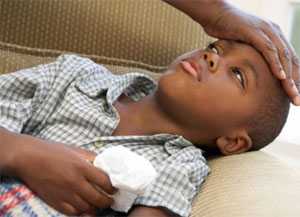
Lead Poisoning
Monday, January 5, 2015
Today at least 4 million households have children living in them that are being exposed to high levels of lead. There are approximately half a million U.S. children ages 1-5 with blood lead levels above 5 micrograms per deciliter (µg/dL), the reference level at which CDC recommends public health actions be initiated.

Ventilation Does Not Effectively Protect Nonsmokers from Secondhand Smoke
Monday, February 23, 2015
Secondhand smoke is the combination of smoke from the burning end of a tobacco product and the smoke breathed out by the user. Secondhand smoke contains more than 7,000 chemicals; hundreds are toxic, and about 70 can cause cancer.1,2 There is no risk-free level of secondhand smoke, and even brief exposure can cause immediate harm.2 Establishing a 100% smoke-free environment is the only effective way to fully protect nonsmokers from secondhand smoke.

The Calorie Balance Equation
Monday, February 16, 2015
When it comes to maintaining a healthy weight for a lifetime, the bottom line is – calories count! Weight management is all about balance—balancing the number of calories you consume with the number of calories your body uses or “burns off.” • A calorie is defined as a unit of energy supplied by food. A calorie is a calorie regardless of its source. Whether you’re eating carbohydrates, fats, sugars, or proteins, all of them contain calories. • Caloric balance is like a scale. To remain in balance and maintain your body weight, the calories consumed (from foods) must be balanced by the calories used (in normal body functions, daily activities, and exercise). If you are maintaining your current body weight, you are in caloric balance. If you need to gain weight or to lose weight, you’ll need to tip the balance scale in one direction or another to achieve your goal.

Arthritis and the Flu
Monday, February 9, 2015
How does arthritis affect how I respond to the flu? Inflammatory arthritis affects the immune system which controls how well your body fights off infections. Also, many medications given to treat inflammatory arthritis can weaken the immune system. People with weakened immune systems are at high risk for getting more severe illness and complications such as pneumonia or hospitalization with the flu. Rheumatoid arthritis and lupus are the most common types of inflammatory arthritis. The best way to prevent the flu is to get vaccinated every year.

What is Frostbite?
Monday, March 30, 2015
Frostbite is an injury to the body caused by freezing. People with frostbite lose feeling and color in affected areas. It most often affects the nose, ears, cheeks, chin, fingers, or toes. Frostbite can permanently damage the body; severe cases can lead to amputation. The risk of frostbite is greater for people with reduced blood circulation and people who are not dressed properly for extremely cold temperatures.

Who is at risk for Interstitial Cystitis?
Monday, March 23, 2015
Interstitial Cystitis (IC) is a chronic bladder condition resulting in recurring discomfort or pain in the bladder or surrounding pelvic region. People with IC usually have inflamed or irritated bladder walls which can cause scarring and stiffening of the bladder. Interstitial Cystitis affects men and women of all racial and ethnic backgrounds and ages. However, it is more common in women than men. Early research suggested that IC was a problem for between 1 of every 100,000 women to 5.1 of every 100,000 in the general population. The latest research suggests that up to 12% of women may have early symptoms of IC.

Diabetes, High Blood Pressure Raise Kidney Disease Risk
Monday, March 16, 2015
Most people with kidney disease aren’t aware of their condition. If you have diabetes, ask your doctor about getting tested for kidney disease. Keep your kidneys healthy by controlling your blood sugar and blood pressure. Kidney disease damages your kidneys, preventing them from cleaning your blood as well as they should.

If you think you are not getting enough water, these tips may help
Monday, March 9, 2015
• Carry a water bottle for easy access when you are at school, work or running errands. • Freeze water in freezer-safe bottles. Take one with you for ice-cold water all day long. • Choose water instead of sugar-sweetened beverages. This can also help with weight management. Substituting water for one 20-ounce sugar-sweetened soda will save you about 240 calories. Access to drinking water is especially important during the school day so students have a healthy alternative to sugar-sweetened beverages. • Choose water when eating out. Generally, you will save money and reduce calories.
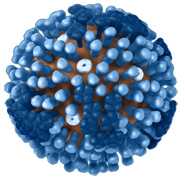
Why CDC Recommends Influenza Antiviral Drugs
Tuesday, March 3, 2015
The 2014-2015 flu season has been a difficult one for a number of reasons, including circulation of H3N2 viruses which are typically associated with more severe flu seasons, and reduced vaccine effectiveness because circulating H3N2 viruses are different or have “drifted” from the H3N2 virus used to make vaccine. A number of media and online outlets have inquired about the public health rationale behind CDC’s influenza antiviral recommendations. This statement provides background information and explains the rationale for CDC’s influenza antiviral recommendations.

Families with Special Needs: Caregiving Tips
Monday, March 2, 2015
Caregivers typically provide assistance to someone who has a chronic illness or disabling condition. Whether a family member with special needs is a child or an adult, combining personal, caregiving, and everyday needs can be challenging. Be informed. Take time to learn about your family member’s condition and special needs requirements. Be an advocate. Document the medical history and care issues of your family member with special needs, and keep this information current. Get Support. Search for local and national groups that provide services, recreation, and information for families with special needs.

Excessive Alcohol Use and Risks to Women’s Health
Monday, April 27, 2015
Although men are more likely to drink alcohol and drink in larger amounts, differences in body structure and chemistry cause women to absorb more alcohol and take longer to break it down and remove it from their bodies (i.e., metabolize it). In other words, women have higher alcohol levels in their blood than men after drinking the same amounts, and the immediate effects occur more quickly and last longer. These differences also make women more vulnerable to alcohol’s long-term effects on health.

Sexual Violence Prevention
Monday, April 20, 2015
Sexual violence is a serious problem that can have lasting, harmful effects on individuals who experience it and their family, friends, and communities. The goal of sexual violence prevention is simple—to stop it from happening in the first place. A variety of prevention efforts are available to help decrease the number of individuals who perpetrate sexual violence and the number of individuals who experience sexual violence.

STD Testing and Treatment
Monday, April 13, 2015
Testing and treatment can help reduce the spread of sexually transmitted diseases (STDs). It is important to talk honestly and openly with your healthcare provider about whether you should be tested for STDs. Your healthcare provider can offer you the best care if you discuss your sexual history openly.

What to Know About Autism Spectrum Disorder
Monday, April 6, 2015
Autism spectrum disorder (ASD) is a developmental disability that can cause significant social, communication and behavioral challenges. There is often nothing about how people with ASD look that sets them apart; however, people with ASD may communicate, interact, behave, and learn in ways that are different from others. The learning, thinking, and problem-solving abilities of people with ASD can range from gifted to severely challenged.
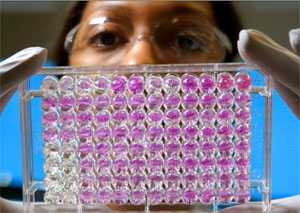
Learn more about CDC’s Lab Safety Efforts
Thursday, May 28, 2015
CDC is committed 24/7 to saving lives and protecting people. CDC’s guiding principles for laboratory work are to ensure the safety of all staff and the community and be as transparent as possible about our work as we conduct high-quality scientific research to protect people in this country and around the world. CDC has created this laboratory safety site as the portal to keep the public informed of our laboratory safety efforts.

Healthy Swimming/Recreational Water
Monday, May 25, 2015
Swimming and other water-related activities are excellent ways to get the physical activity and health benefits needed for a healthy life. Americans swim hundreds of millions of times in pools, oceans, lakes, rivers, and hot tubs/spas each year and most of them have a safe and healthy time enjoying the water. Still, it is important to be aware of ways to prevent recreational water illnesses (RWIs), sunburn, and drowning.
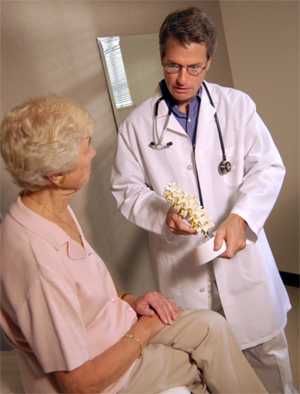
May Is National Osteoporosis Awareness and Prevention Month
Monday, May 18, 2015
Osteoporosis is a medical condition in which bones become weak and brittle. People with osteoporosis have an increased risk for fractures, most commonly of the hip, forearm/wrist, and spine. These fractures can have a variety of harmful effects, including chronic pain and disability, loss of independence, decreased quality of life, and increased risk of early death. The U.S. Preventive Services Task Force recommends screening for osteoporosis for women age 65 years or older, and earlier screening for women age 50-64 years with certain risk factors. For example, a 55-year-old white woman whose parent has had a hip fracture should consider getting screened early because her 10-year risk of fracture is at least as great as a 65-year-old white woman who has no additional risk factors.

Adding Physical Activity to Your Life
Monday, May 11, 2015
Regular physical activity helps improve your overall health and fitness and reduces your risk for many chronic diseases. Fitting regular exercise into your day might seem difficult at first, but the Physical Activity Guidelines for Americans are more flexible than ever, giving you the freedom to reach your physical activity goals through different types and amounts of activities each week. It’s easier than you think!

Hand Hygiene
Monday, May 4, 2015
Hand washing is like a “do-it-yourself” vaccine—it involves five simple and effective steps (think Wet, Lather, Scrub, Rinse, Dry) you can take to reduce the spread of diarrheal and respiratory illness so you can stay healthy. Regular hand washing, particularly before and after certain activities, is one of the best ways to remove germs, avoid getting sick, and prevent the spread of germs to others.

Stay Safe In and Around Swimming Pools
Monday, June 29, 2015
Splashing in a swimming pool is a sure way to have summer fun. But it’s important to protect children and others in and around the water. Drowning is a leading cause of injury death for children ages 1 to 4, and the fifth leading cause of unintentional injury death for people of all ages. For every child younger than 15 who dies from drowning in a pool, another 10 receive emergency care for nonfatal submersion injuries. Near drowning can cause brain damage that can result in long-term disabilities including memory problems, learning disabilities, and permanent loss of basic functions. The good news is that you can prevent drowning.

Summer Sun Safety for Kids
Monday, June 22, 2015
Just a few serious sunburns can increase your child’s risk of skin cancer later in life. Kids don’t have to be at the pool, beach, or on vacation to get too much sun. Their skin needs protection from the sun’s harmful ultraviolet (UV) rays whenever they’re outdoors.

National Men’s Health Week
Monday, June 15, 2015
Men can make their health a priority by taking daily steps to be healthier and stronger. • Take a bike ride. • Toss a ball. • Eat less salt. • Try more veggies. There are many easy things you can do every day to improve your health and stay healthy. During National Men’s Health Week (June 15-21) take the time to try some of these health tips: get a good amount of sleep, eat healthier, and cut down on things that stress you out.

Sickle Cell Disease: What You Need to Know
Monday, June 8, 2015
Sickle cell disease (SCD) is a group of inherited red blood cell disorders. Healthy red blood cells are round, and they move through small blood vessels to carry oxygen to all parts of the body. When someone has SCD, the red blood cells become hard and sticky and look like a C-shaped farm tool called a “sickle.” The sickle cells die early, which causes a constant shortage of red blood cells. Also, when the sickle cells travel through small blood vessels, they get stuck and clog the blood flow. This can cause pain and other serious problems such as infection, acute chest syndrome, and stroke.

How Do I Protect Myself from Mosquito Bites?
Monday, July 27, 2015
Wear insect repellent: Yes! It is safe. When used as directed, insect repellent is the BEST way to protect yourself from mosquito bites—even children and pregnant women should protect themselves. Higher percentages of active ingredient provide longer lasting protection. Need more information on insect repellent? Cover up: When weather permits, wear long-sleeved shirts and pants. Keep mosquitoes outside: Use air conditioning or make sure that you repair and use window/door screens.
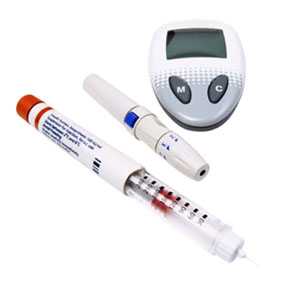
Plan for Diabetes Care in Heat & Emergencies
Monday, July 20, 2015
Plan ahead for diabetes care during summer heat, storms, and emergencies. If you have diabetes, you know how important it is to have a care routine. Summer weather, with its high temperatures and extreme storms, can upset your routine and make it more difficult to manage diabetes. Diabetes can make it harder for your body to handle high heat and humidity. When temperatures rise, you may need to make changes in your medication and what you eat and drink. During emergencies or natural disasters such as hurricanes or tornadoes, you may have other needs related to diabetes.

What Is Raw Milk?
Monday, July 13, 2015
Raw milk is milk from cows, goats, sheep, or other animals that has not been pasteurized. Although no official data are available, it is thought that raw milk accounts for less than 1% of milk sold to consumers in the United States. Raw milk can carry harmful bacteria and other germs that can make you very sick or kill you. While it is possible to get foodborne illnesses from many different foods, raw milk is one of the riskiest. Getting sick from raw milk can mean many days of diarrhea, stomach cramping, and vomiting. Less commonly, it can cause kidney failure, paralysis, chronic disorders, and even death.

What Causes Hemophilia?
Monday, July 6, 2015
Hemophilia is an inherited bleeding disorder in which the blood does not clot properly. It is caused by a mutation or change, in one of the genes that provides instructions for making blood clot. This mutation can prevent clotting protein from working properly or be missing altogether. The severity of hemophilia that a person has is determined by the amount of factor in the blood. The lower the amount of the factor, the more likely it is that bleeding will occur which can lead to serious health problems.

National Immunization Month: Human Papillomavirus (HPV) Vaccination
Monday, August 17, 2015
Human Papillomavirus (HPV) is a common virus that is spread through sexual contact. Most of the time HPV has no symptoms so people do not know they have it. There are approximately 40 types of genital HPV. Some types can cause cervical cancer in women and other kinds of cancer in both women and men. Other HPV types can cause genital warts in men and women. The HPV vaccine works by preventing the most common types of HPV that cause cervical cancer and genital warts. For HPV vaccines to be effective, they must be given before exposure to the virus. Preteens should receive all three doses of the HPV vaccine series long before they begin any type of sexual activity and are exposed to HPV.

Contact Lens Health Week
Monday, August 10, 2015
Increased awareness about the importance of proper cleaning and care of contact lenses can encourage contact lens wearers to adopt healthy habits that reduce the chances of getting an eye infection. August 24-28, 2015 marks the second annual Contact Lens Health Week. This year’s observance theme is Healthy Habits Mean Healthy Eyes and the goal is to encourage: • Healthy contact lens hygiene habits • Proper use, care, and storage of contact lenses and supplies • Regular visits to an eye care provider Contact Lens Health Week 2015 is specifically targeting teenage contact lens wearers so that they adopt healthy habits early. As teens head back to school, reinforcing proper contact lens wear and care can promote good vision and healthy eyes throughout the school year and life.

World Breastfeeding Week
Monday, August 3, 2015
Breastfeeding is one of the most effective steps a mother can take to protect the health of her baby. In observance of World Breastfeeding Week, August 1-7, learn more about the promotion and support of breastfeeding in the United States. The American Academy of Pediatrics recommends exclusive breastfeeding for about the first 6 months and continued breastfeeding for at least the first year as solid foods are introduced. However, in the United States, although most mothers hope to breastfeed, and 79% of babies start out being breastfed, only 19% are exclusively breastfed 6 months later. The success rate among mothers who want to breastfeed can be greatly improved with active support from their families, friends, communities, clinicians, health care leaders, employers, and policymakers. Given the importance of breastfeeding to the health and well-being of mothers and children, it is critical that we take action across the country to support breastfeeding.

New 2014 BRFSS data released
Monday, September 21, 2015
The BRFSS is a unique, state-based surveillance system active in all 50 states, the District of Columbia, Puerto Rico, and Guam. Using both landline and cellular telephones, the survey collects information on health risk behaviors, clinical preventive health practices, and health care access from a representative sample of non-institutionalized adults aged 18 years and older in each state. The BRFSS provides flexible, timely, and ongoing data collection that allows for state-to-state and state-to-nation comparisons. The BRFSS is the largest ongoing telephone-based surveillance system in the world, with more than 460,000 interviews conducted in 2014.

Atrial Fibrillation Awareness
Monday, October 26, 2015
Atrial fibrillation, often called AFib or AF, is the most common type of heart arrhythmia. An arrhythmia is when the heart beats too slowly, too fast, or in an irregular way. When a person has AFib, the normal beating in the upper chambers of the heart (the two atria) is irregular, and blood doesn’t flow as well as it should from the atria to the lower chambers of the heart (the two ventricles). AFib may occur in brief episodes, or it may be a permanent condition.

Newborn Screening Awareness
Monday, October 19, 2015
Newborn screening identifies conditions that can affect a child’s long-term health or survival. Early detection, diagnosis, and intervention can prevent death or disability and enable children to reach their full potential. Each year, millions of babies in the U.S. are routinely screened, using a few drops of blood from the newborn’s heel, for certain genetic, endocrine, and metabolic disorders, and are also tested for hearing loss prior to discharge from a hospital or birthing center.

Prostate Cancer Awareness
Monday, October 12, 2015
Cancer is a disease in which cells in the body grow out of control. When cancer starts in the prostate, it is called prostate cancer. Except for skin cancer, prostate cancer is the most common cancer in American men. Research has found risk factors that increase your chances of getting prostate cancer. These risk factors include—Age: The older a man is, the greater his risk for getting prostate cancer. Family history: Certain genes (the functional and physical units of heredity passed from parent to offspring) that you inherited from your parents may affect your prostate cancer risk. Race: Prostate cancer is more common in some racial and ethnic groups than in others, but medical experts do not know why.
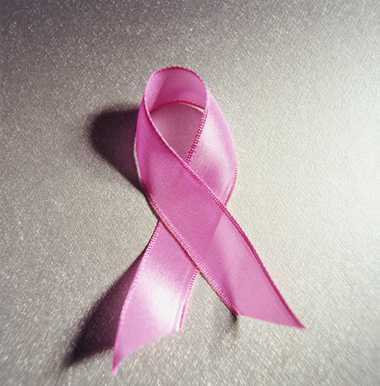
Breast Cancer Awareness
Monday, October 5, 2015
Other than skin cancer, breast cancer is the most common cancer among American women. Getting mammograms regularly can lower the risk of dying from breast cancer. The United States Preventive Services Task Force recommends that if you are 50 to 74 years old, be sure to have a screening mammogram every two years. If you are 40 to 49 years old, talk to your doctor about when to start and how often to get a screening mammogram.

Diabetic Retinopathy
Monday, November 30, 2015
Diabetic retinopathy (DR) is a common complication of diabetes. The leading cause of blindness in American adults, DR is characterized by progressive damage to the blood vessels of the retina, the light-sensitive tissue at the back of the eye that is necessary for good vision. The risks of DR are reduced through disease management, including good control of blood sugar, blood pressure, and lipid abnormalities. Early diagnosis of DR and timely treatment reduce the risk of vision loss.

Healthy Food Environments
Monday, November 23, 2015
Many different strategies contribute to healthy food environments. These include 1) providing incentives for supermarkets or farmers’ markets to locate in underserved areas; 2) having nutrition information and caloric content on restaurant and fast food menus; and 3) ensuring nutrition standards are followed in child care facilities, schools, hospitals, and worksites.

Spotlighting the National Public Health Agenda on Lupus
Tuesday, November 17, 2015
The Centers for Disease Control and Prevention, the National Association of Chronic Disease Directors (NACDD) and the Lupus Foundation of America (LFA) recently released the first-ever National Public Health Agenda for Lupus. The Agenda aims to help improve the care and quality of life for people living with lupus, it also complements the efforts in lupus biomedical research and clinical care. The Agenda provides a comprehensive framework to guide public health action related to diagnosis, disease management, treatment, and research for lupus. Key priorities include creating better case definitions of lupus, expanding public health research, developing effective disease self-management programs, and increasing public awareness.

James Bond Exposed…to 50 Years of Occupational Hazards
Wednesday, November 4, 2015
If you’re a British Secret Service Agent known as 007, facing danger is part of your job description. For more than 50 years, James Bond has expertly avoided injury and death as he fought countless villains and saved the world many times over. While the hazards that the fictitious character, James Bond, faces on the job may be extreme, American workers also face many hazards at work that put them at risk for injury, disease or death. A new Science Blog by the National Institute for Occupational Safety and Health (NIOSH) at CDC, chronicles some of the workplace hazards Bond has encountered on the movie screen and highlights NIOSH information and resources that can help keep him, and you, safe on the job.

Intimate Partner Violence
Monday, December 28, 2015
Intimate partner violence (IPV) is a serious, preventable public health problem that affects millions of Americans. The words “intimate partner violence” describe physical, sexual, or psychological harm by a current or former partner or spouse. This type of violence can occur among heterosexual or same-sex couples and does not require sexual intimacy. The goal is to stop IPV before it begins. There is a lot to learn about how to prevent IPV. We do know that strategies that promote healthy behaviors in relationships are important. Programs that teach young people skills for dating can stop violence in dating relationships before it happens.

Who should get vaccinated this season?
Monday, December 21, 2015
Everyone 6 months of age and older should get a flu vaccine every season. Vaccination to prevent influenza is particularly important for people who are at high risk of serious complications from influenza. See People at High Risk of Developing Flu-Related Complications (http://www.cdc.gov/flu/about/disease/high_risk.htm) for a full list of people at higher risk because of age and health factors. Flu vaccination has important benefits. It can reduce flu illnesses, doctors’ visits, and missed work and school due to flu, as well as flu-related hospitalizations.

Lead Hazards in Holiday Toys and Toy Jewelry
Monday, December 14, 2015
Many children get toys and toy jewelry as gifts during the holiday season, but some toys contain lead. Protecting children from exposure to lead is important to lifelong good health. No safe blood lead level in children has been identified. Even low levels of lead in blood have been shown to affect IQ, ability to pay attention, and academic achievement. And effects of lead exposure cannot be corrected. Lead is invisible to the naked eye and has no smell. Children may be exposed to lead by simply handling toys normally. It is normal for toddlers and infants to put toys, fingers and other objects in their mouths. They may also be exposed to lead this way.

Childhood Arthritis
Monday, December 7, 2015
Juvenile idiopathic arthritis (JIA) is an umbrella term used to define a group of conditions experienced by children that include some form of chronic arthritis. JIA is one of the more common chronic diseases of childhood. Criteria for JIA include onset before age 16; persistent, arthritis in 1 or more joints for at least 6 weeks, and exclusion of other potential causes of childhood arthritis.
- Page last reviewed: February 10, 2015
- Page last updated: February 10, 2015
- Content source:



 ShareCompartir
ShareCompartir